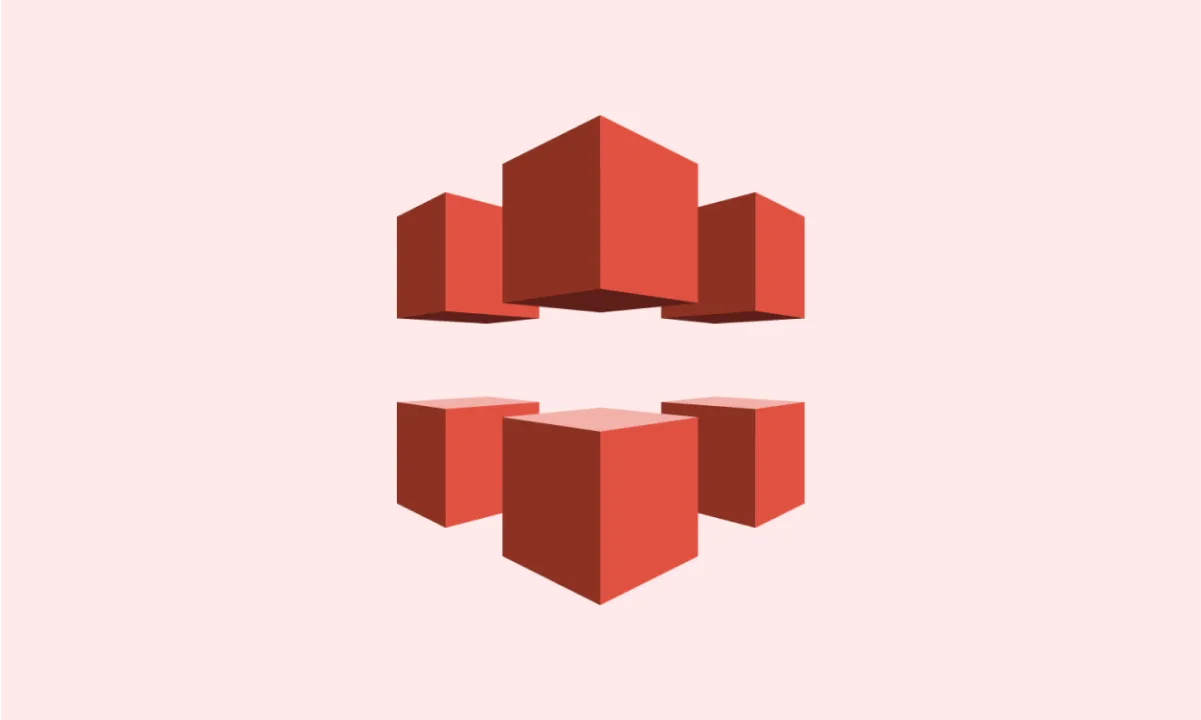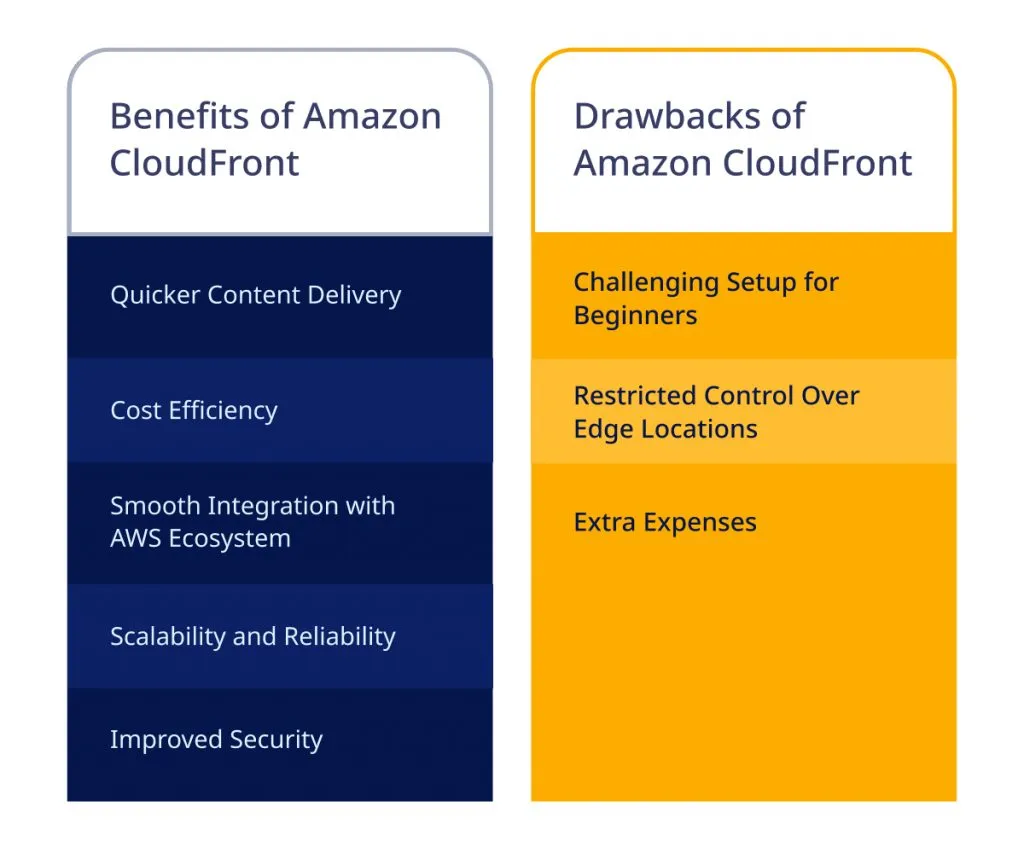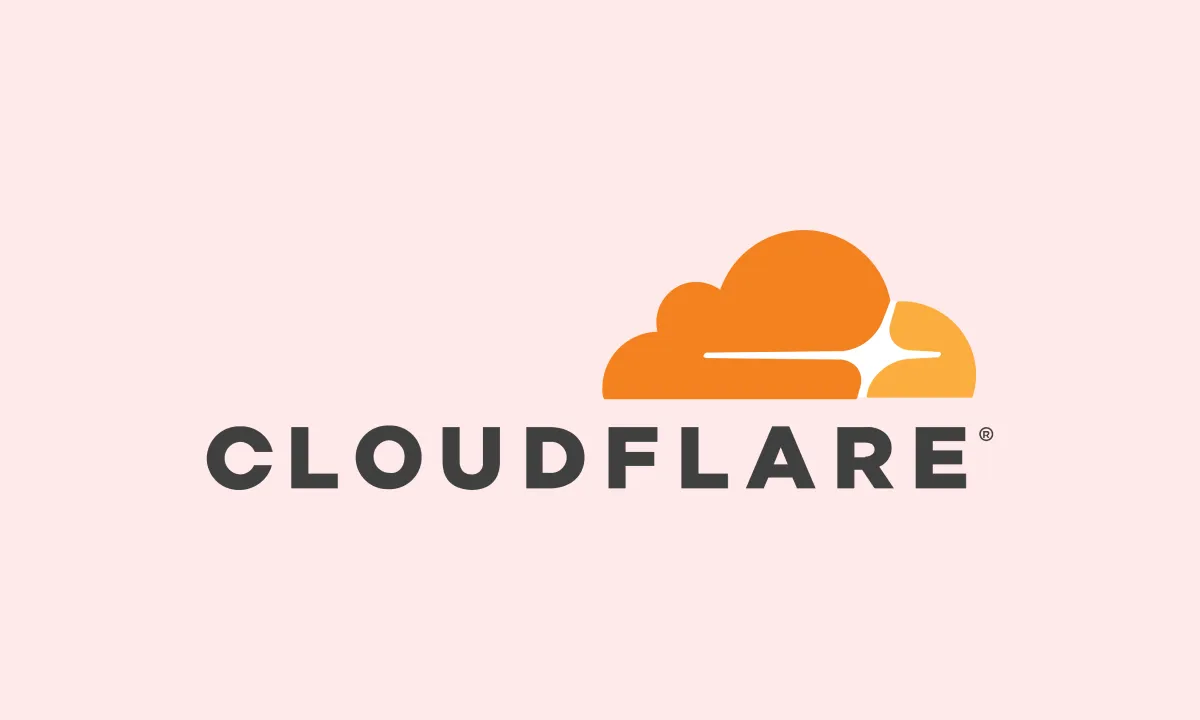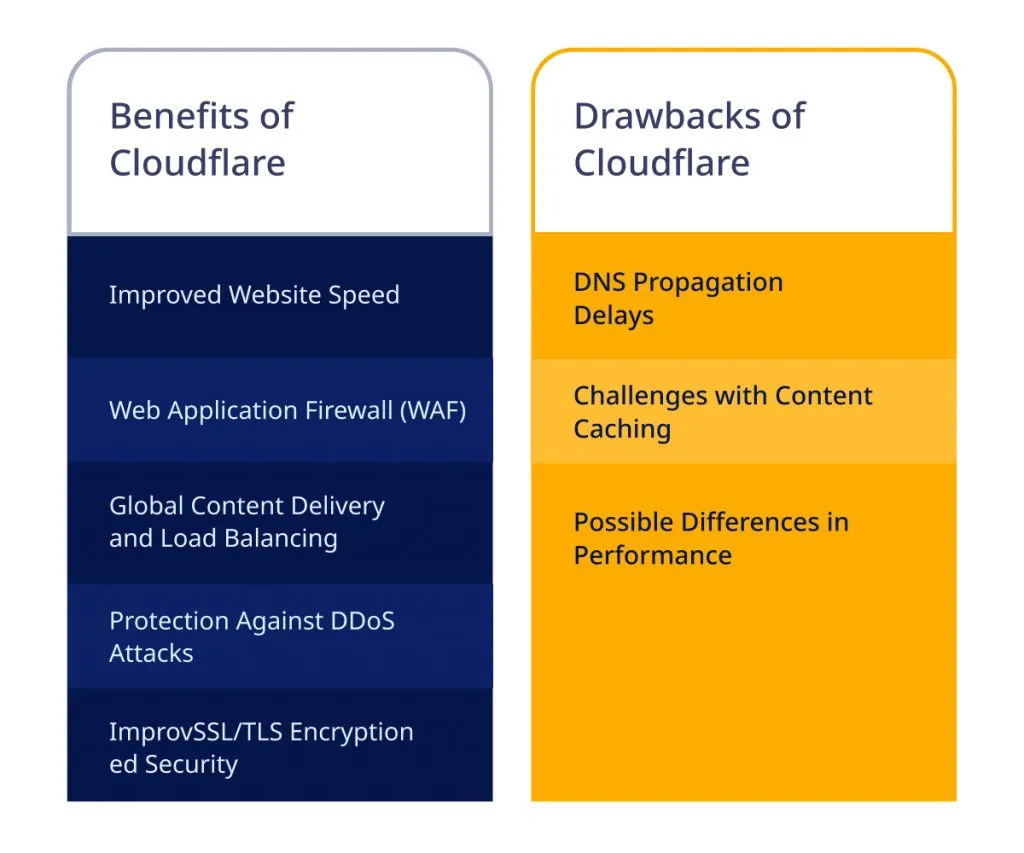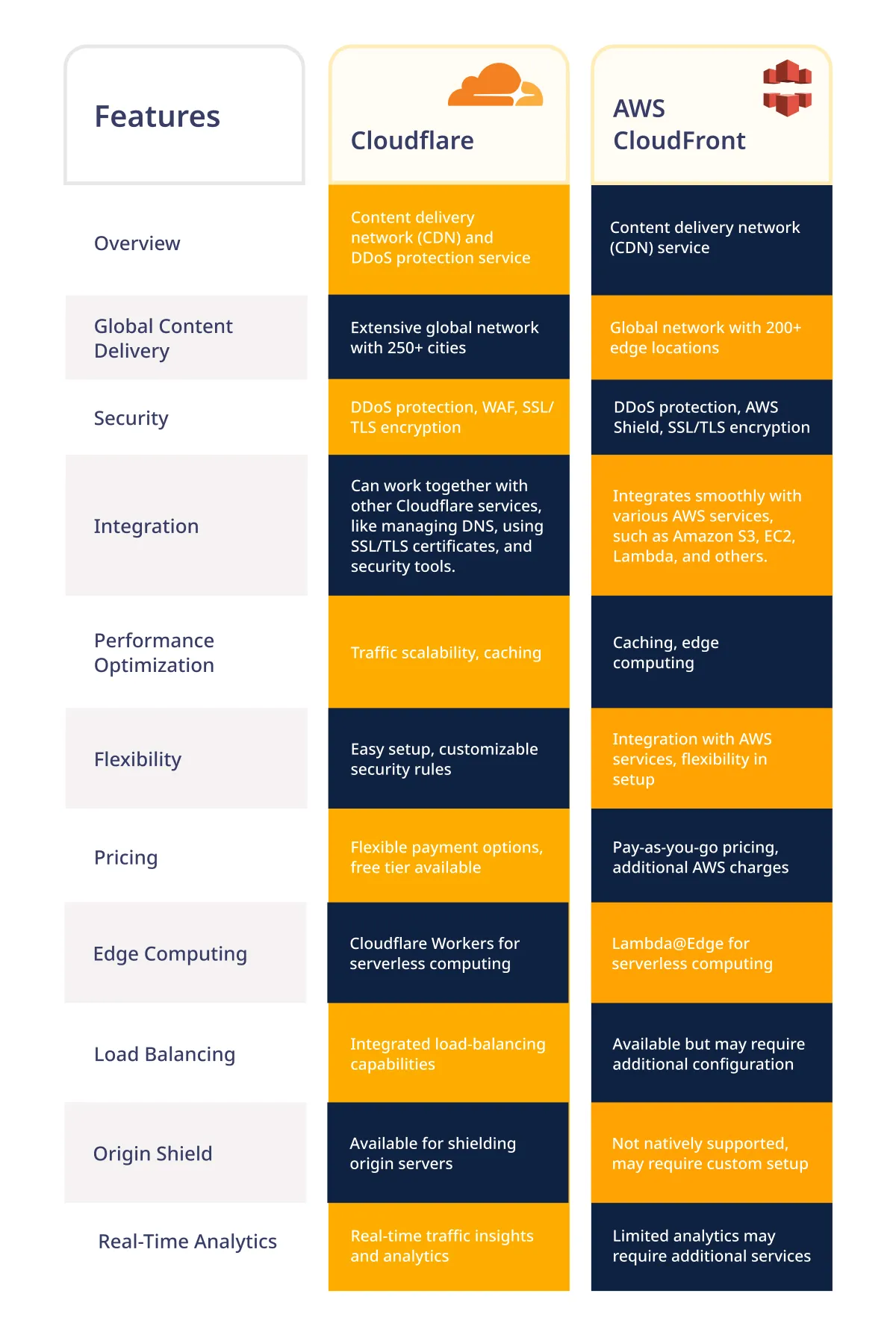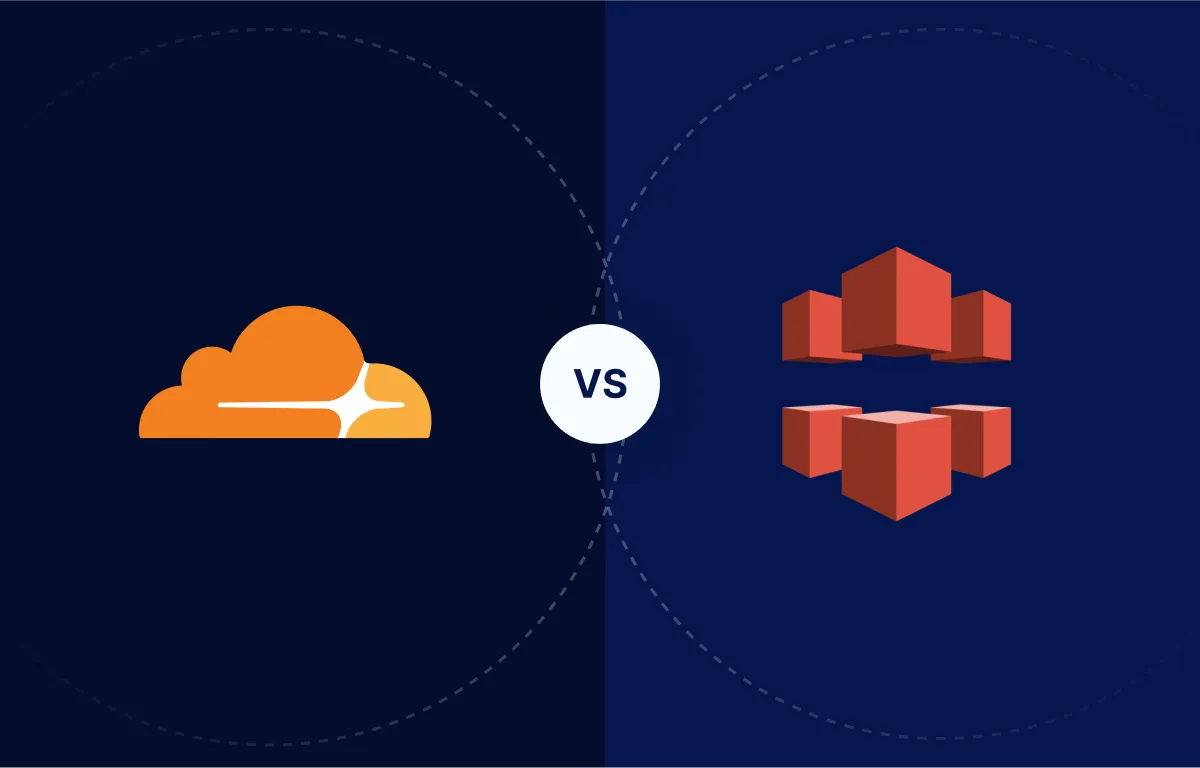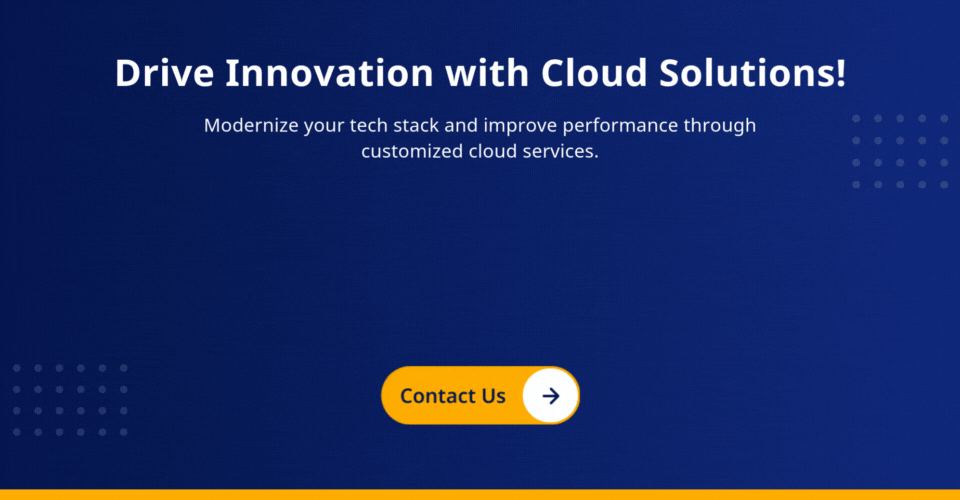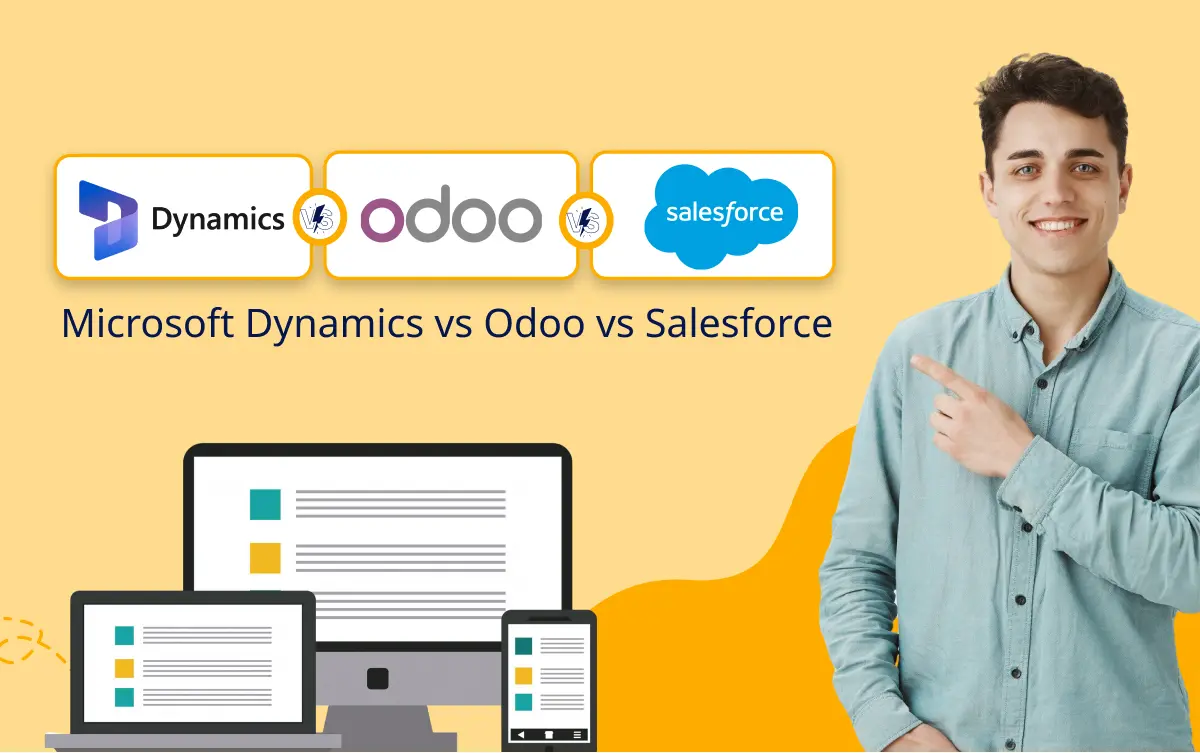Content Delivery Networks (CDNs) are essential to make websites faster and safer. Amazon CloudFront and Cloudflare are two of the well-known CDN services.
This blog post compares Cloudflare vs. AWS CloudFront, two popular CDNs. We’ll discuss their features, strengths, and differences to help you understand which one could be better for your needs.
Our aim is to explain how well Amazon CloudFront and Cloudflare handle delivering content, keeping things secure, scaling up, and working with other systems.
We also want to give useful advice to businesses and developers so they can choose the best CDN for their needs.
What is a CDN, and Why is it Important?
When comparing Cloudflare vs. AWS, you must know that both have existed since the beginning of web browsing. Initially, Cloudflare could only store static content like pictures, videos, and website styles.
Unlike before, modern CDNs can handle dynamic content, which changes often and can’t be stored.
Common examples include online shopping carts, blog comments, and real-time updates on sites like stock market platforms.
CDN technology is important because:
- It enhances users’ web browsing experience by making content load quicker.
- It helps big online stores and social media platforms manage large numbers of visitors better, especially when many people are online at the same time.
- It prevents internet traffic jams, ensuring businesses stay online even in emergencies by choosing different ways to send content to users.
- It assists in defending against one of the worst cyber threats: the Distributed Denial-of-Service (DDoS) attack that websites can face.
- CDNs enable small and medium websites to grow as needed. When there are a lot of visitors, CDN providers can ensure that the website can manage the traffic without crashing or slowing down.
- It provides cost-effective modern CDN solutions, such as Software as a Service (SaaS), which allows small businesses to benefit from CDN technology without spending a lot.
- There are many Cloudflare vs. AWS CloudFront CDN providers available. Gartner, a research firm, listed the top global CDN providers, which include Amazon CloudFront and Cloudflare. Lots of organizations trust these CDN providers to run their big web apps smoothly.
Though Cloudflare and Amazon CloudFront aim for the same goal, they have different performance, pricing, and security features and abilities.
Let’s compare Cloudflare vs. AWS CloudFront to understand how they work and help businesses.
Let ValueCoders help you implement the right CDN solution tailored to your business needs.
What is Amazon CloudFront?
Amazon CloudFront helps make websites faster by storing copies of their content in different places worldwide.
This means that when someone tries to access the site, they get it from a nearby location, which speeds things up.
When users want to see something on a website, dedicated AWS developers and experts in CloudFront fetch it for them from the closest spot, making it faster to load.
CloudFront has different features, such as being available all over the world, storing content, keeping things secure, working with other Amazon services, and letting you see what’s happening in real-time.
CloudFront is the preferred choice for businesses aiming to make their websites faster and ensure content reaches a wide range of people without any problems.
Key Features of Amazon CloudFront
Amazon CloudFront has a lot of great features. It works closely with big telecom companies worldwide, provides personalized security measures to meet specific standards, and has secure edge computing capabilities.
- Global Edge Network
- Availability
- Cost Efficiency
- Edge Computing
- Security
Furthermore, Amazon CloudFront offers a wide range of access controls for its clients, such as restricting users in particular countries from accessing their websites or applications.
Additionally, Amazon ensures several regulatory standards compliance, including PCI DSS Level 1, HIPAA, and SOC 1, 2, and 3.
Benefits of Amazon CloudFront
Discover the power of Amazon CloudFront to optimize your digital content delivery. With its seamless integration, scalability, and robust security features, CloudFront ensures a superior user experience and support while saving costs.
Explore the benefits below to see how it can elevate your online presence.
- Quicker Content Delivery: Amazon CloudFront makes sure your digital content gets to users faster. It does this by storing and sending content from servers that are close to where users are. This means data doesn’t have to travel as far, making web pages, videos, images, and other stuff load faster with less waiting time.
- Cost Efficiency: Amazon CloudFront offers a pay-as-you-go pricing plan, giving you control over expenses while ensuring a great user experience. You only pay for the data transfer and requests used, which saves money. Additionally, CloudFront’s caching system lowers the strain on your main server, cutting down on server expenses and bandwidth usage.
- Smooth Integration with AWS Ecosystem: Being part of AWS cloud computing services, CloudFront works well with other AWS services. You can quickly share content stored in Amazon S3 buckets or speed up the delivery of dynamic content made by AWS Lambda functions. This makes managing your setup easier and lets you use a wide range of services for different parts of your cloud application development services, like storage, processing, and content delivery.
- Scalability and Reliability: CloudFront is built to manage different levels of website traffic. This means your web apps can grow smoothly even during busy times. CloudFront automatically adjusts and spreads content across many locations, so it can handle sudden increases in user activity without slowing down or having issues.
- Improved Security: CloudFront offers robust security features to safeguard your content and apps from online dangers. It uses SSL/TLS encryption to keep data safe as it moves between edge locations and users. CloudFront also works with AWS Web Application Firewall (WAF), letting you create rules to stop harmful traffic and handle Distributed Denial of Service (DDoS) attacks.
Amazon CloudFront provides several advantages, such as faster content delivery, scalability, cost savings, improved security, and easy integration with AWS services. Explore more about AWS operations and recommended methods.
Let ValueCoders handle the technical complexities while you focus on growing your business.
Drawbacks of Amazon CloudFront
Embarking on your journey with Amazon CloudFront? Prepare for a few challenges that beginners might encounter. However, with patience and guidance, you’ll soon harness its full potential for content delivery.
- Challenging Setup for Beginners: Getting started with Amazon CloudFront, especially if you’re new to AWS, can be tricky and take some time to learn. Adjusting settings and distribution methods might need technical know-how, which could make the setup process difficult at first for newcomers.
- Restricted Control Over Edge Locations: Although CloudFront offers many edge locations, users have limited say in choosing the exact ones for content distribution. This lack of detailed control might affect how precisely content is targeted geographically, especially for certain needs.
- Extra Expenses: While Amazon CloudFront operates on a pay-as-you-go basis, it’s essential to understand that using CloudFront could lead to added costs for data transfer, requests, and the use of other AWS services that work with CloudFront. It’s crucial to plan carefully and keep an eye on usage to prevent surprises in your bills. While Amazon CloudFront offers flexibility and efficiency, it’s essential to be mindful of expected additional expenses and the learning curve involved.
With careful planning and monitoring, you can navigate these challenges effectively and leverage CloudFront’s benefits for your business.
Used Cases of Amazon CloudFront
Here are two scenarios where Amazon CloudFront would be a great choice.
- Media Streaming Service: Suppose you’re creating a platform for streaming media. Your aim is to deliver top-notch videos to users worldwide without any interruptions or waiting.
You’ve got a great collection of videos on your platform, and you want people to watch them smoothly, without any buffering or delays.
CloudFront ensures that your video content is of top-notch quality, with fast delivery, adaptive streaming for different internet speeds, and global coverage. Plus, it keeps your content safe from unauthorized access.
- Online Store for Global Customers: Picture yourself managing a well-known online store selling customers’ clothes and accessories globally.
Your website has users worldwide, and you want to ensure everyone has a seamless shopping experience, no matter where they are.
CloudFront delivers your content quickly, safely, and at scale to users. It stores static files at nearby locations to make content load faster and reduce waiting times.
It adjusts to handle sudden traffic increases and offers pay-as-you-go payment options. It also secures data with SSL/TLS encryption and works with AWS WAF to keep user information safe.
In both cases, Amazon CloudFront stands out as a great choice as it speeds up content delivery, ensures a smooth user experience, and offers affordable solutions for handling different traffic levels.
Also read: Best Practices for Building Scalable and Secure Cloud-based Applications
What is Cloudflare?
Cloudflare is a web platform that provides various services to improve website speed, security, and reliability.
It operates similar to Content Delivery Network (CDN), offering features like protection against DDoS attacks, Web Application Firewall (WAF), SSL/TLS encryption, evenly distributing traffic with load balancing, and tools for optimizing website performance.
Additionally, Cloudflare speeds up websites, enhances security, and ensures smooth operation. It reduces waiting time, prevents cyber-attacks, and maintains website reliability. It’s an excellent choice for businesses and website owners looking for a secure, fast, and dependable online presence.
Key Features of Cloudflare
Cloudflare provides various valuable services, including global distribution, DNS management, and additional security and encryption features.
- A Worldwide Content Delivery Network (CDN)
- Protection Against DDoS Attacks
- Rate Limiting
- API Protection
- Domain Name System (DNS) Service
- Encryption with SSL/TLS
- Load Balancing
Cloudflare’s comprehensive approach makes it a reliable option for users seeking simplicity and a wide range of services.
However, it may not be the best option if you require greater control or flexibility in choosing tools and services for your applications.
Benefits of Cloudflare
Boost your online presence with Cloudflare’s range of features created to improve website speed, security, and dependability.
Whether it’s speeding up content delivery or protecting against online threats, Cloudflare provides a complete solution for optimizing your web presence.
Improved Website Speed: Cloudflare’s global Content Delivery Network (CDN) speeds up page loading by storing content on servers globally. Cloudflare fetches content from the nearest server when users request content, resulting in faster page loads. This enhances user experience, increases engagement, and improves search engine rankings due to quicker page loading times.
Trust ValueCoders for expert advice and implementation support.
Web Application Firewall (WAF): Cloudflare’s WAF protects websites from many security risks, like SQL injection and cross-site scripting (XSS). It comes with a bunch of ready-made security rules and can be adjusted to fit what your particular application needs.
Global Content Delivery and Load Balancing: Cloudflare’s CDN not only makes content delivery faster but also ensures balanced traffic distribution. Load balancing evenly circulates incoming traffic across multiple servers, optimizing usage and ensuring continuous availability. This prevents servers from becoming overloaded and reduces the risk of website downtime if a server fails.
Protection Against DDoS Attacks: Cloudflare’s strong DDoS protection stops big cyberattacks that try to flood a website’s servers. By studying how traffic comes in and stopping bad requests, Cloudflare makes sure your website stays up even during serious attacks. This stops downtime and saves money that could be lost if the attacks succeeded.
SSL/TLS Encryption: Cloudflare gives you free SSL/TLS certificates, which ensure that the information shared between your website and its visitors is secure. This prevents anyone from spying on sensitive data like logins and credit card details. SSL/TLS doesn’t just protect user information; it also makes visitors trust your site more because their browsers show a padlock icon when the connection is secure.
Using Cloudflare for your business can make your websites faster, safer, and more reliable. This means users have a better time on your site, and it’s harder for cyber threats to cause trouble.
Drawbacks of Cloudflare: While Cloudflare comes with many advantages for improving websites, it’s important to know about potential problems that might come up. Knowing about these issues can help you deal with them well and make the most of Cloudflare’s benefits for your website.
DNS Propagation Delays: When you set up Cloudflare for the first time or make changes to DNS records, it might take a while for these changes to spread across the internet. This means it could be some time before your updates start working, which might slow down how quickly you can make changes.
Challenges with Content Caching: While Cloudflare’s content caching helps make things load faster, it can also cause problems when you update content. If you make changes to your website, it might take some time for the cached content to update, which could mean users see old information for a while.
Possible Differences in Performance: Although Cloudflare’s content delivery network covers a lot of places, users might have different experiences depending on where they are and which edge server they connect to. This could affect how fast things load and how users feel about the site.
Despite these challenges, Cloudflare remains a valuable tool for improving website performance and security.
By addressing these potential issues with careful planning and monitoring, you can ensure a seamless user experience and reap the benefits of Cloudflare’s services.
Also read: Cloud Migration: Benefits, Process, Types & Challenges
Used Cases of Cloudflare
Here are two scenarios where Cloudflare would be a great choice.
- Collaboration Software for Remote Teams
Imagine you’re in charge of a Software-as-a-Service (SaaS) application that helps remote dedicated development teams work together.
The application lets them share documents, have video meetings, and use project management tools.
It’s important to ensure that data is safe, everything runs smoothly, and people can talk in real-time.
Cloudflare’s CDN, SSL/TLS encryption, WAF, and DDoS protection ensure that remote teams can collaborate quickly, securely, and without interruptions.
- News Website with Varying Traffic
Imagine a news website that gets many more visitors when big news is happening. Sometimes, there’s a sudden rush of people visiting the site.
It’s important that the website can handle these busy times, keep loading quickly, and stay safe from online attacks.
Cloudflare offers scalability for handling traffic, protection from DDoS attacks, a WAF, and caching for news websites.
This makes sure news pages load quickly, stay safe from attacks, and people can always access news stories without any interruptions.
In these situations, Cloudflare’s features are perfect for meeting the special requirements of news websites and SaaS applications.
It offers solutions for handling lots of traffic, keeping things secure, making sure everything runs smoothly, and protecting data.
Maximize the benefits of your chosen CDN platform with our strategic insights.
Head-to-Head CDN Comparison: Cloudflare vs AWS CloudFront
Explore the comparative features of both Cloudflare vs. AWS CloudFront head-to-head to make an informed decision for your content delivery needs.
This breakdown highlights key aspects of each service, helping you understand their strengths and differences.
Understanding the distinctions between Cloudflare vs. AWS CloudFront can help you in selecting the most suitable CDN solution for your requirements.
Consider factors like speed and network comparison, global reach, integration options, and pricing and security analysis to determine which service aligns best with your priorities and objectives.
Also read: Top Cloud Services Companies For Enterprises To Connect With
Choosing Between Cloudflare & AWS CloudFront: Which is Better For You?
Choosing between Cloudflare vs. AWS CloudFront depends on what you need and what’s most important.
Opt for Amazon CloudFront if:
- You’re closely connected with Amazon Web Services (AWS) and want everything to work smoothly together.
- You value seamless integration with other AWS services to create a complete cloud system.
- You want to use the AWS Cloud infrastructure automation to deliver and optimize your content.
- You need a worldwide CDN that can deliver content quickly with minimal delay.
- You prioritize scalability, meaning it can handle changes in traffic levels smoothly.
Opt for Cloudflare if:
- You want a flexible CDN solution with robust security and optimization features.
- You’re looking for a CDN with many security features, like protection against DDoS attacks and a Web Application Firewall (WAF).
- You want an easy-to-use platform that works well for different kinds of websites and apps.
- You value simplicity and want a setup process that’s easy to understand and follow.
- You’re looking for affordable plans that offer both free and paid options.
In the end, the decision between Cloudflare vs. AWS CloudFront depends on things like what systems you already have, the features you need, how to hire skilled developers, technical knowledge, your budget, and what you want to achieve with your website in terms of speed, security, and user satisfaction.
Rely on ValueCoders for comprehensive support and maintenance services.
Final Words!
Comparing Cloudflare vs. AWS CloudFront shows that they’re both excellent CDN services.
Cloudflare focuses on offering flexible security features and easy-to-use interfaces, while Amazon CloudFront excels at seamlessly integrating with AWS.
Ultimately, the ideal option between the two should be based on factors like your readiness to switch, your specific needs, your existing setup, and what you prefer.
Whichever you go with should match your individual needs for speed, security, and user satisfaction. For expert guidance on implementing CDN solutions tailored to your business needs, contact ValueCoders today!



